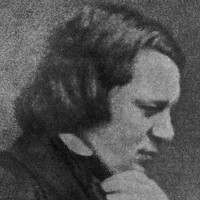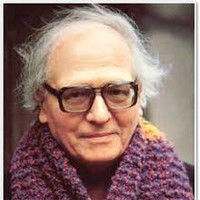Quartet for the End of Time with Jonathan Biss



“For some time now,” Robert Schumann wrote to a friend in 1849, “I’ve been very busy — it’s been my most fruitful year — it seemed as if the outer storms compelled people to turn inward.” The “outer storms” to which Schumann referred were the pockets of revolutionary unrest that spread through Europe, including flare-ups in his home city of Dresden. He still completed nearly forty works that year, among them a set of “Fantasy Pieces,” or Fantasiestücke. He conceived the score as a duet for clarinet and piano, but he made sure to publish an alternate part that allowed the clarinet line to be played by cello to make it accessible to more customers.
Schumann was the son of an author and bookseller, and literary influences figured prominently in his musical outlook. His first use of the title Fantasiestücke, applied to a set of 1837 piano miniatures, was a nod to the writer E. T. A. Hoffman and his short story collection, Fantasiestücke in Callots Manier. Schumann had scribbled Soiréestücke (“Night Pieces”) on the manuscript of this work, but he switched the title to Fantasiestücke when he published the duets in 1849.
The first selection, labeled “Tender and with expression,” has the feeling of a song without words. The middle movement, marked “Lively, light,” raises the piano accompaniment to the level of equal partnership in the melodic dialogue. The final section, “Quick and with fire,” has the type of quick mood changes and exploratory escapades that match the tradition of a freewheeling musical “Fantasy.”
Aaron Grad ©2022

The composer and flutist Brent Michael Davids has created works for the Kronos Quartet and Chanticleer, and his film scores and recordings capture his highly personal sound rooted in his Indigenous heritage as a member of the Stockbridge-Munsee Band of the Mohican Nation. He wrote the following note about Taptonahana, which The Saint Paul Chamber Orchestra commissioned in 2021 for flutist Julia Bogorad-Kogan.
Taptonahana translates as “we speak” in the Mahican language of the Mohican people. Most indigenous languages are generative languages (for example: Mahican, Lenape or Munsee), rather than representative (such as English). For the West, language is a means of representing something real, and words themselves stand for something by denoting it; language personifies what is thought to be ‘really real’ in Western thought. In this way, words are seen as tiny canoes that carry meaning inside them. But for Native languages, words create reality; they spawn it, and are considered generative. For indigenous people, life moves along however life is spoken, whether enacted through speech, ceremonially performed, or reciprocated with extended kinship relations.
A generative process is how indigenous music works as well, though songs are not fixed nouns for indigenous life, so more insight might come from a process of song-ing or music-ing. For Native Americans, song-ings are considered voicings of the people, and what a Native American enacts with song-ing moves life in that direction; what is sung about happens. When generative song-ing occurs, it’s like birthing out performative sequences of life. No two sequential songs are the same in the process, just as no two successive moments are identical. Indigenous cultures see music like giving birth so that each new song event is a new creation. The song being sung might be a time-honored song, but when performed it is newly reborn — it is not considered the same song.
With its mix of indigenous and Western solo flute stylings, Taptonahana brings a telling or talking into the world from a Mohican perspective. The tonal shape of the indigenous song-ing style mimics the Mahican language with sharp enunciations and whip-like releases. The songs and languages share a close bond, and Taptonahana is offered as a musical conversation, as if embracing several indigenous speakers, but enacted alone by solo flute. Taptonahana blends Western composition and indigenous song-ing for a glimpse of Mohican life, from the inside, as “we speak.”
Aaron Grad ©2022

The composer Olivier Messiaen was serving in the French military in 1940 when he was captured amid the Nazi invasion. He was transferred to a prisoner-of-war camp in Silesia known as Stalag VIIIA, where among his fellow inmates he found accomplished musicians who played violin, clarinet and cello. With the help of a sympathetic guard, Messiaen obtained paper, a pencil and a quiet space in which to compose, and he even convinced his captors to bring in an upright piano so that he could perform with his colleagues. On January 15, 1941, the motley quartet performed Messiaen’s newest work for a rapt audience of prisoners and guards alike in a frigid, unheated barrack.
The work first heard on that extraordinary day was Quatuor pour la fin du temps, or Quartet for the End of Time. The title came from a passage in Chapter 10 of the Book of Revelation, in which a “mighty angel … cried in a loud voice … that there should be time no longer.” Messiaen was a devoted Catholic, and music was a prime vehicle for his faith and mystical worldview. He was also a birdsong collector, a student of the modes and rhythms of Eastern music, a synaesthete (meaning that his brain mingled sensory inputs of sound and color), and a composer and organist with the finest training from the Paris Conservatoire — all of which can be heard and felt in Quartet for the End of Time.
The quartet consists of eight disparate yet interrelated movements. In a preface to the published score, Messiaen gave a detailed account of each movement’s origins and meanings:
I. Liturgy of Crystal. Between three and four in the morning, the awakening of birds: a solo blackbird or nightingale improvises, surrounded by a shimmer of sound, by a halo of trills lost very high in the trees. Transpose this onto a religious plane and you have the harmonious silence of Heaven.
II. Vocalise, for the Angel who announces the end of Time. The first and third parts (very short) evoke the power of this mighty angel, a rainbow upon his head and clothed with a cloud, who sets one foot on the sea and one foot on the earth. In the middle section are the impalpable harmonies of heaven. In the piano, sweet cascades of blue-orange chords, enclosing in their distant chimes the almost plainchant song of the violin and cello.
III. Abyss of the birds. Clarinet alone. The abyss is Time with its sadness, its weariness. The birds are the opposite to Time; they are our desire for light, for stars, for rainbows, and for jubilant songs.
IV. Interlude. Scherzo, of a more individual character than the other movements, but linked to them nevertheless by certain melodic recollections.
V. Praise to the Eternity of Jesus. Jesus is considered here as the Word. A broad phrase, “infinitely slow,” on the cello, magnifies with love and reverence the eternity of the Word, powerful and gentle, “whose time never runs out.” The melody stretches majestically into a kind of gentle, regal distance. “In the beginning was the Word, and Word was with God, and the Word was God.”
VI. Dance of fury, for the seven trumpets. Rhythmically, the most characteristic piece of the series. The four instruments in unison imitate gongs and trumpets (the first six trumpets of the Apocalypse followed by various disasters, the trumpet of the seventh angel announcing consummation of the mystery of God). Use of added values, of augmented or diminished rhythms, of non-retrogradable rhythms. Music of stone, formidable granite sound; irresistible movement of steel, huge blocks of purple rage, icy drunkenness. Hear especially all the terrible fortissimo of the augmentation of the theme and changes of register of its different notes, towards the end of the piece.
VII. Tangle of rainbows, for the Angel who announces the end of Time. Recurring here are certain passages from the second movement. The angel appears in full force, especially the rainbow that covers him (the rainbow, symbol of peace, wisdom, and all luminescent and sonorous vibration). In my dreams, I hear and see ordered chords and melodies, known colors and shapes; then, after this transitional stage, I pass through the unreal and suffer, with ecstasy, a tournament; a roundabout compenetration of superhuman sounds and colors. These swords of fire, this blue-orange lava, these sudden stars: there is the tangle, there are the rainbows!
VIII. Praise to the Immortality of Jesus. Large violin solo, counterpart to the violoncello solo of the fifth movement. Why this second eulogy? It is especially aimed at second aspect of Jesus, Jesus the Man, the Word made flesh, immortally risen for our communication of his life. It is all love. Its slow ascent to the acutely extreme is the ascent of man to his god, the child of God to his Father, the being made divine towards Paradise.
Messiaen once wrote that he endeavored to create “a true music, that is to say, spiritual, a music which may be an act of faith; a music which may touch upon all subjects without ceasing to touch upon God; an original music, in short, whose language may open a few doors, yet take down distant stars.” If any music fulfills this creed, it surely is Quartet for the End of Time.
Aaron Grad ©2022
All audience members and staff will be required to wear non-cloth masks (N95, KN95, KF94 or surgical masks). Proof of vaccination, booster or a negative COVID-19 test result will no longer be required. More Information
Concerts are currently limited to 50% capacity to allow for distancing. For concerts with assigned seating, tickets are available by price scale and specific seats will be assigned by the Ticket Office. For general admission and concerts with assigned seats, tickets will be delivered a couple of weeks prior to each concert — including Print At Home tickets. Please email us at tickets@spcomail.org if you have any seating preferences or accessibility needs. Seating and price scale charts can be found at thespco.org/venues.
Get driving directions and find nearby parking.
Find dining options close to the venue.
View seating charts to find out where you'll be seating.
Get driving directions and find nearby parking.
Find dining options close to the venue.
View seating charts to find out where you'll be seating.
